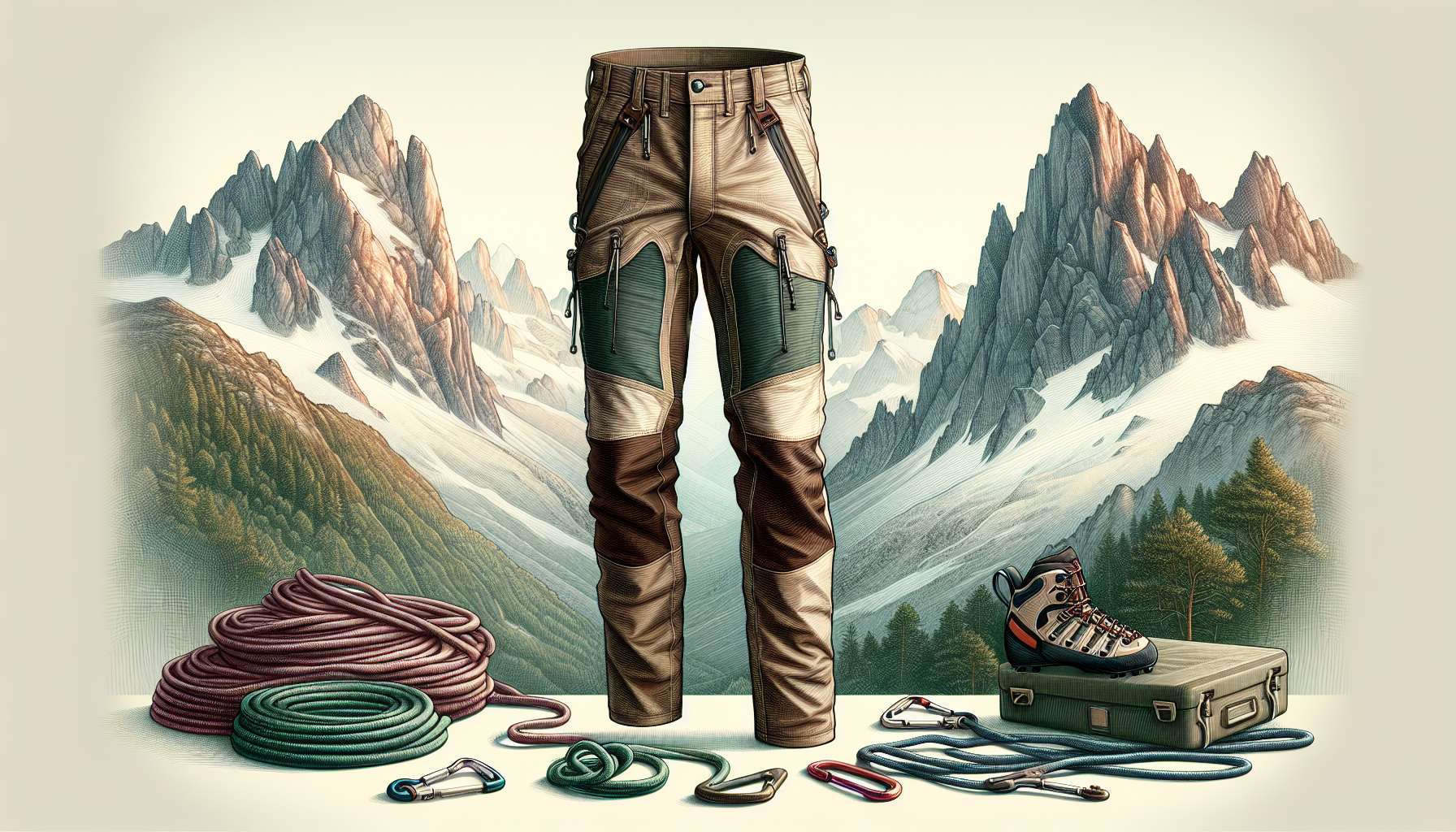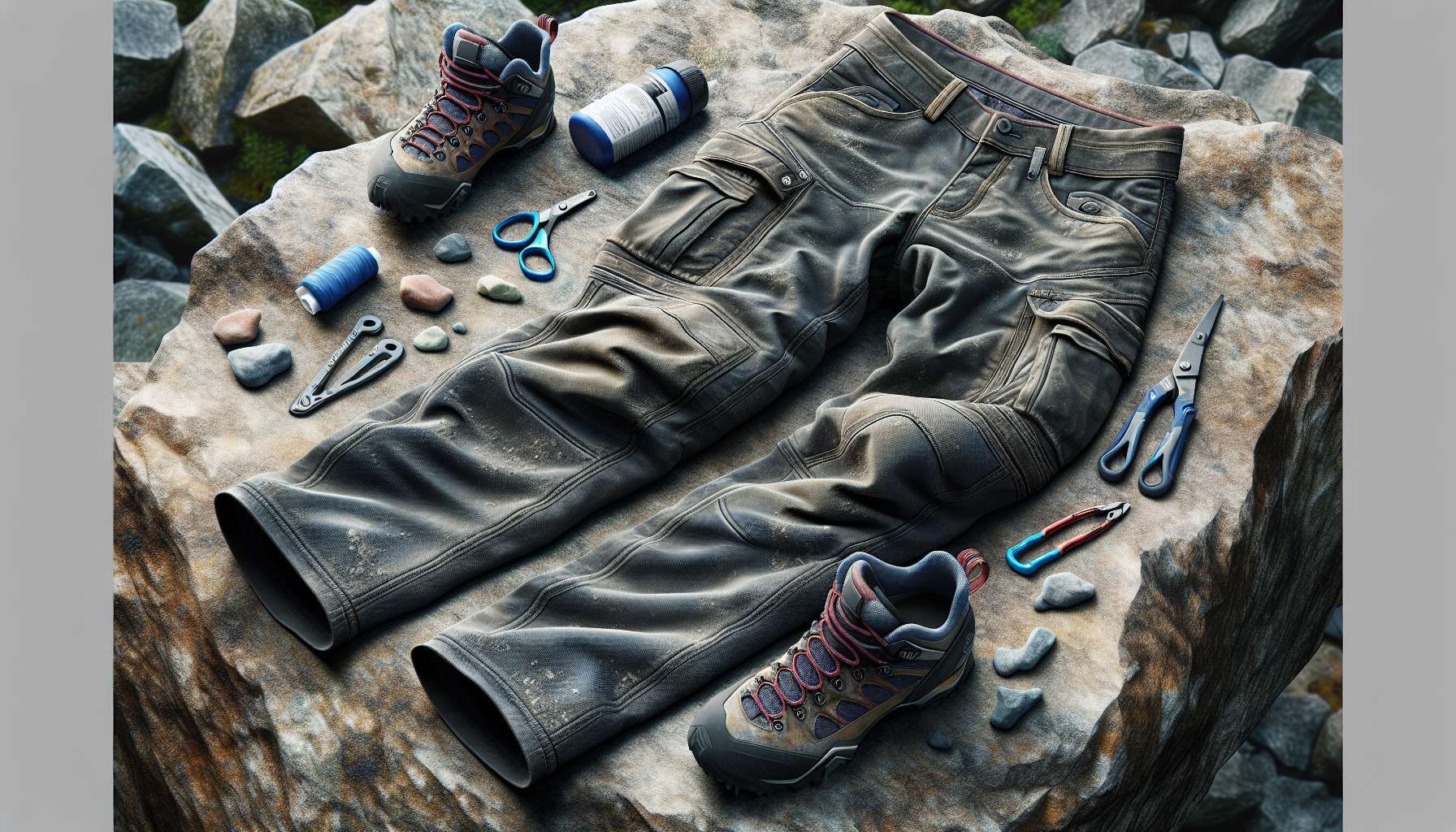The Ultimate Guide to Climbing Pants: Everything You Need to Know
Whether you are a seasoned climber or just starting out, one piece of essential gear that you cannot overlook is climbing pants. Climbing pants are not your average pair of trousers they are specifically designed to provide comfort, flexibility, and durability while scaling rocks, boulders, or cliffs. In this comprehensive guide, we will delve deep into the world of climbing pants, exploring their history, construction, features, and why they are a must-have for any climbing enthusiast.
The Evolution of Climbing Pants
Climbing pants have come a long way from their humble beginnings. In the early days of rock climbing, climbers often wore whatever pants they had on hand, whether it was jeans, cargo pants, or even shorts. However, as the sport evolved and became more specialized, the need for purpose-built climbing apparel became apparent.
One of the pioneers in designing climbing-specific clothing was Yvon Chouinard, the founder of outdoor gear company Patagonia. In the 1970s, Chouinard introduced the stand-up nylon shorts, which were lightweight, durable, and allowed for a full range of motion while climbing. This marked the beginning of a new era in climbing apparel, where function and performance took center stage.
What Makes Climbing Pants Different?
So, what sets climbing pants apart from your regular trousers? The answer lies in their design and construction. Climbing pants are typically made from technical fabrics that are lightweight, breathable, and stretchy. These materials are chosen to provide the utmost comfort and freedom of movement while climbing.
One of the key features of climbing pants is the articulated knees, which are strategically shaped to mimic the natural bend of your knees. This design allows for unrestricted movement, whether you are high-stepping, heel-hooking, or stemming. Additionally, climbing pants often have a gusseted crotch, which provides extra room and flexibility in the most critical area.
Another important aspect of climbing pants is their durability. Climbers often find themselves scraping against rough granite or sharp limestone, so having pants that can withstand abrasion is crucial. Many climbing pants are reinforced in high-wear areas such as the knees, seat, and ankles to ensure they can handle the rigors of the sport.
Types of Climbing Pants
There are several different styles of climbing pants to choose from, each tailored to meet the specific needs of different types of climbers. Some of the most common types include:
Bouldering Pants
Bouldering pants are designed for short, intense climbing sessions on boulders or indoor climbing walls. They are typically lightweight, flexible, and offer a slim fit to minimize interference with your movement. Bouldering pants often have elasticated cuffs at the ankles to prevent them from riding up while climbing.
Trad Climbing Pants
Traditional climbing, or trad climbing, involves placing your own protection as you ascend a route. Trad climbing pants are usually more durable and have reinforced knees and seat to withstand the abrasion from cracks and chimneys. They also tend to have more pockets for storing gear while on the wall.
Sport Climbing Pants
Sport climbing focuses on climbing routes with pre-placed bolts for protection. Sport climbing pants are typically lightweight, breathable, and offer a high level of stretch for dynamic movements. They are also designed to be harness-friendly, with a low-profile waistband that wont interfere with your harness.
Alpine Climbing Pants
Alpine climbing involves climbing in remote and rugged mountain environments, often in variable weather conditions. Alpine climbing pants are highly versatile, offering protection from wind and moisture while remaining breathable and comfortable. They are usually made from more technical fabrics and have features like adjustable cuffs and waistbands for a customized fit.
Choosing the Right Climbing Pants
With so many options available, choosing the right pair of climbing pants can be overwhelming. Here are some factors to consider when selecting climbing pants:
Material
The material of the climbing pants plays a crucial role in their performance. Look for pants made from a blend of nylon and spandex for durability and stretch, or lightweight polyester for breathability. Some pants also feature DWR (durable water repellent) coatings to shed moisture and dry quickly.
Fit
Choose a fit that is comfortable and allows for a full range of motion. Slim fit pants are great for bouldering and sport climbing, while a more relaxed fit may be preferable for trad or alpine climbing. Consider the length of the pants as well you dont want them to be too long or too short.
Features
Consider the features that are important to you. Do you need extra pockets for storing your chalk bag, phone, or snacks? Are adjustable waistbands or cuffs a must-have for you? Think about the specific requirements of your climbing style and choose pants that meet those needs.
Brand Reputation
When in doubt, opt for reputable climbing apparel brands that have a proven track record of quality and performance. Brands like Patagonia, Black Diamond, Arcteryx, and Prana are known for their high-quality climbing pants that are designed to go the distance.
Caring for Your Climbing Pants
To ensure your climbing pants last for many climbs to come, proper care is essential. Here are some tips for caring for your climbing pants:
Washing
Most climbing pants can be machine washed in cold water with a mild detergent. Avoid using fabric softeners or bleach, as they can break down the fabric and reduce its performance. To preserve the water repellent coating, consider using a technical wash that is specifically designed for outdoor apparel.
Drying
Air drying is the best way to preserve the longevity of your climbing pants. Avoid using high heat in the dryer, as it can damage the fabric and elastic fibers. Hang your pants to dry in a well-ventilated area away from direct sunlight to prevent fading and shrinkage.
Storage
Store your climbing pants in a cool, dry place away from direct sunlight and moisture. Avoid folding them tightly or hanging them on sharp hooks, as this can cause unnecessary wear and tear. If possible, hang your pants on a hanger to maintain their shape and prevent wrinkles.
Final Thoughts
As you can see, climbing pants are not just another piece of clothing they are a vital part of your climbing gear that can enhance your performance and comfort on the wall. By choosing the right pair of climbing pants and taking care of them properly, you can ensure that they will accompany you on many adventures to come. So, whether you are a beginner climber or a seasoned pro, invest in a good pair of climbing pants and take your climbing to new heights!




